Momomi Chida
︎
painter
Tokyo, Japan
painter
Tokyo, Japan
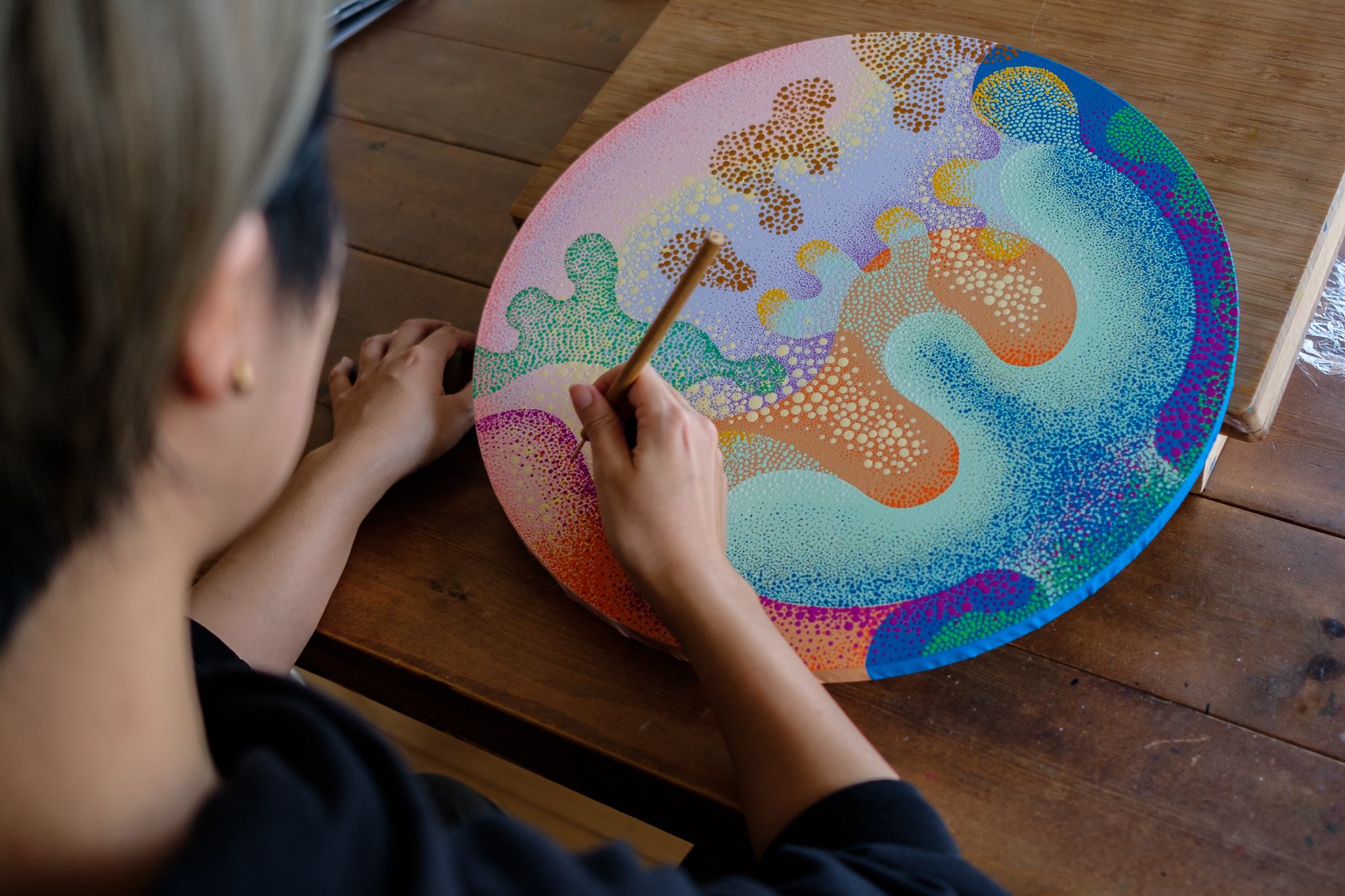
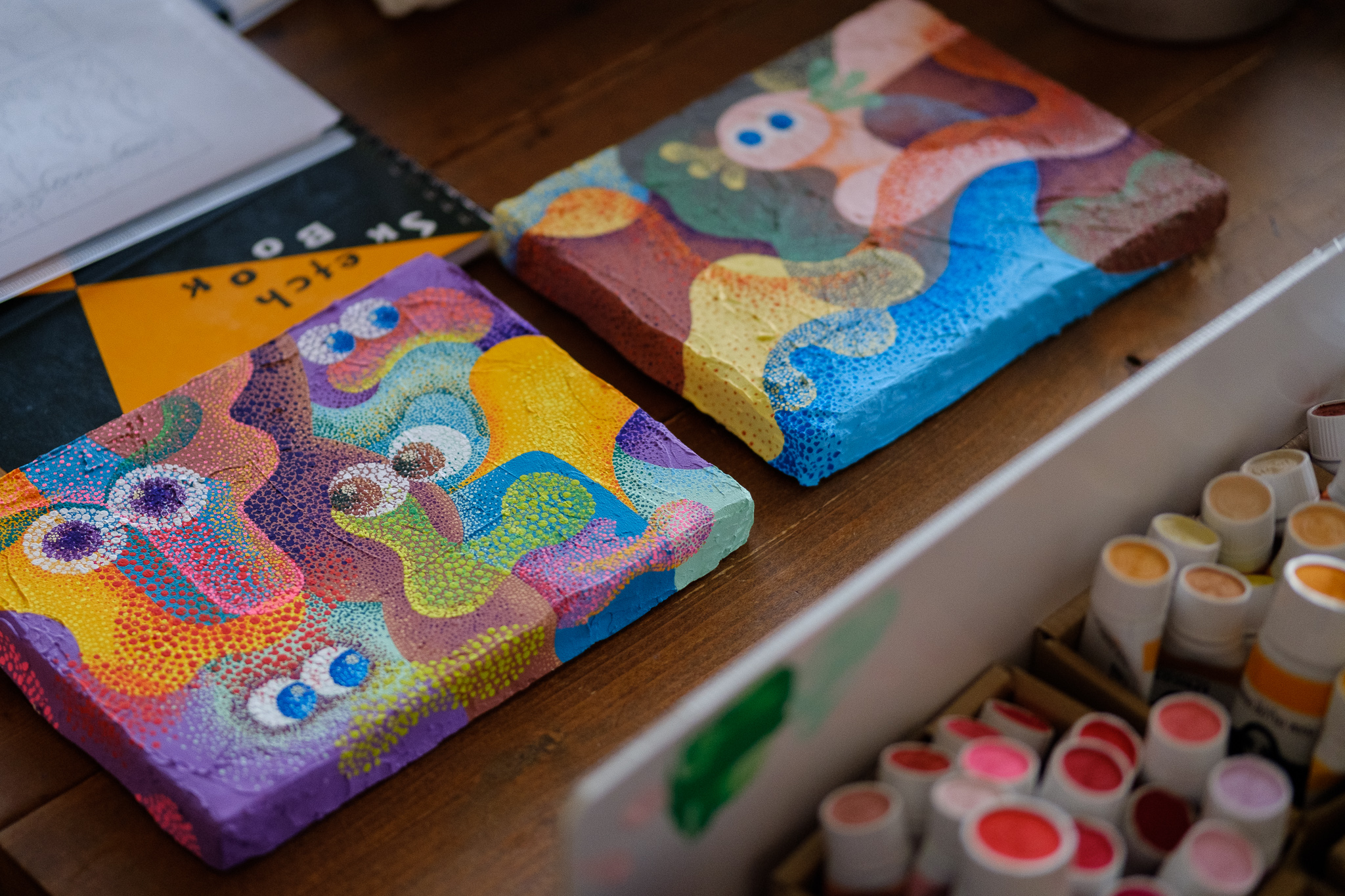
WHEN I LOOK closely at the art of Japanese painter, Momomi Chida, I must admit that I find myself spellbound. On the surface, her art seems simple: coloured dots on a canvas. But with her composition and intention, she beautifully brings it all together in one cohesive piece.
I spent some time with Momo in her home studio last October, and she shared with me about her art process, what inspires her work and her experience as an artist in Japan.
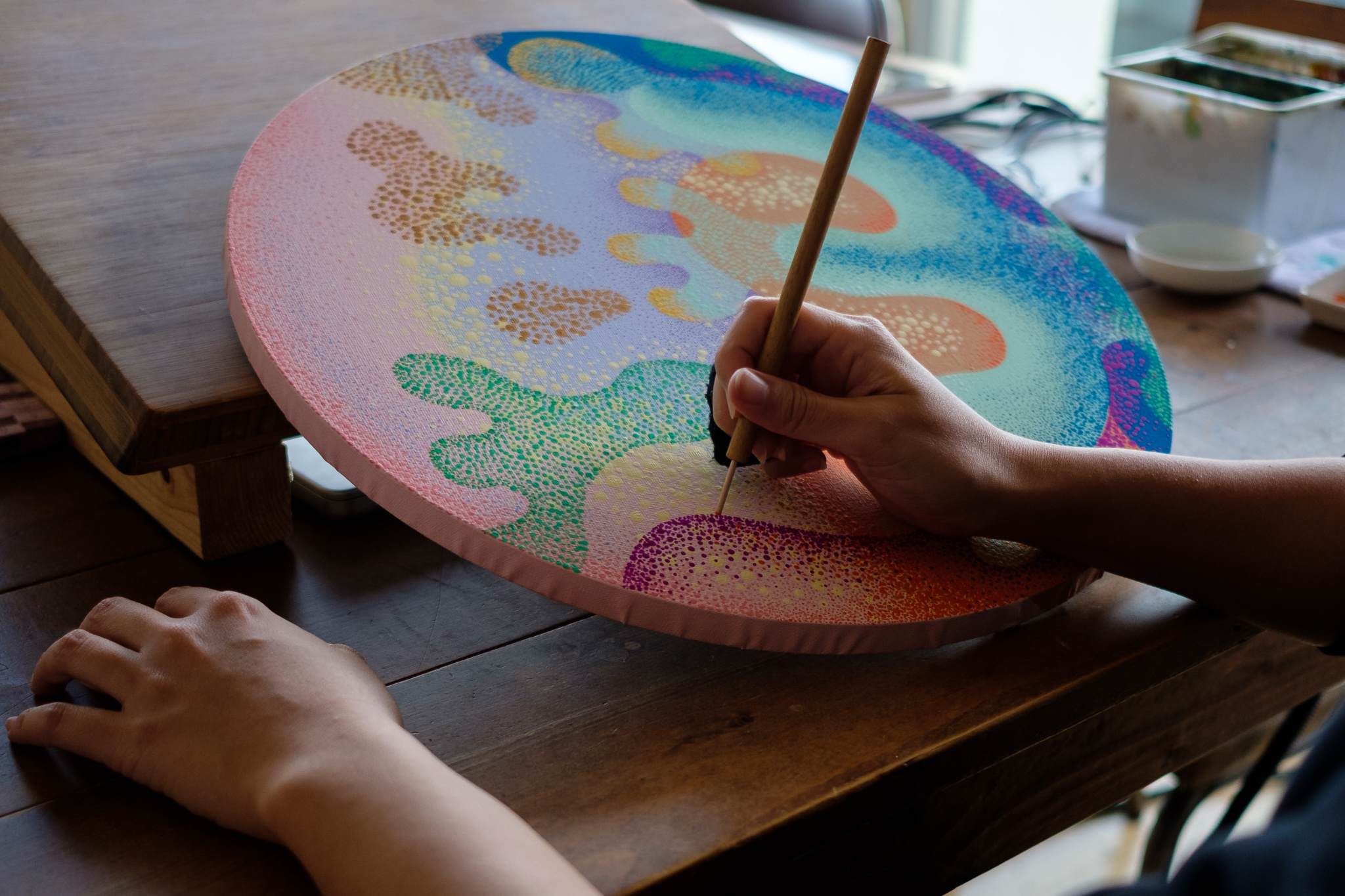

Q: How would you describe your style of painting?
It started when I encountered the Aboriginal art of dot painting, that originated from the indigenous people of Australia. I think that must have been almost 10 years ago? It felt very different from what artists in Japan were doing at the time, so I decided to experiment with this style and see where it would lead me.
It started when I encountered the Aboriginal art of dot painting, that originated from the indigenous people of Australia. I think that must have been almost 10 years ago? It felt very different from what artists in Japan were doing at the time, so I decided to experiment with this style and see where it would lead me.
What drew me to this style is the fact that something so small like individual dots can come together to create something bigger than itself.
I experimented and tried many ways to achieve the dots – using cotton buds or chopsticks, but eventually I landed on toothpicks. They seem to work the best and convey what I want to achieve in my art. I started with more recognisable forms but I’d say my art is half-abstract now. I’d say my style is evolving – less obvious, more abstract, but always surprising.
I experimented and tried many ways to achieve the dots – using cotton buds or chopsticks, but eventually I landed on toothpicks. They seem to work the best and convey what I want to achieve in my art. I started with more recognisable forms but I’d say my art is half-abstract now. I’d say my style is evolving – less obvious, more abstract, but always surprising.
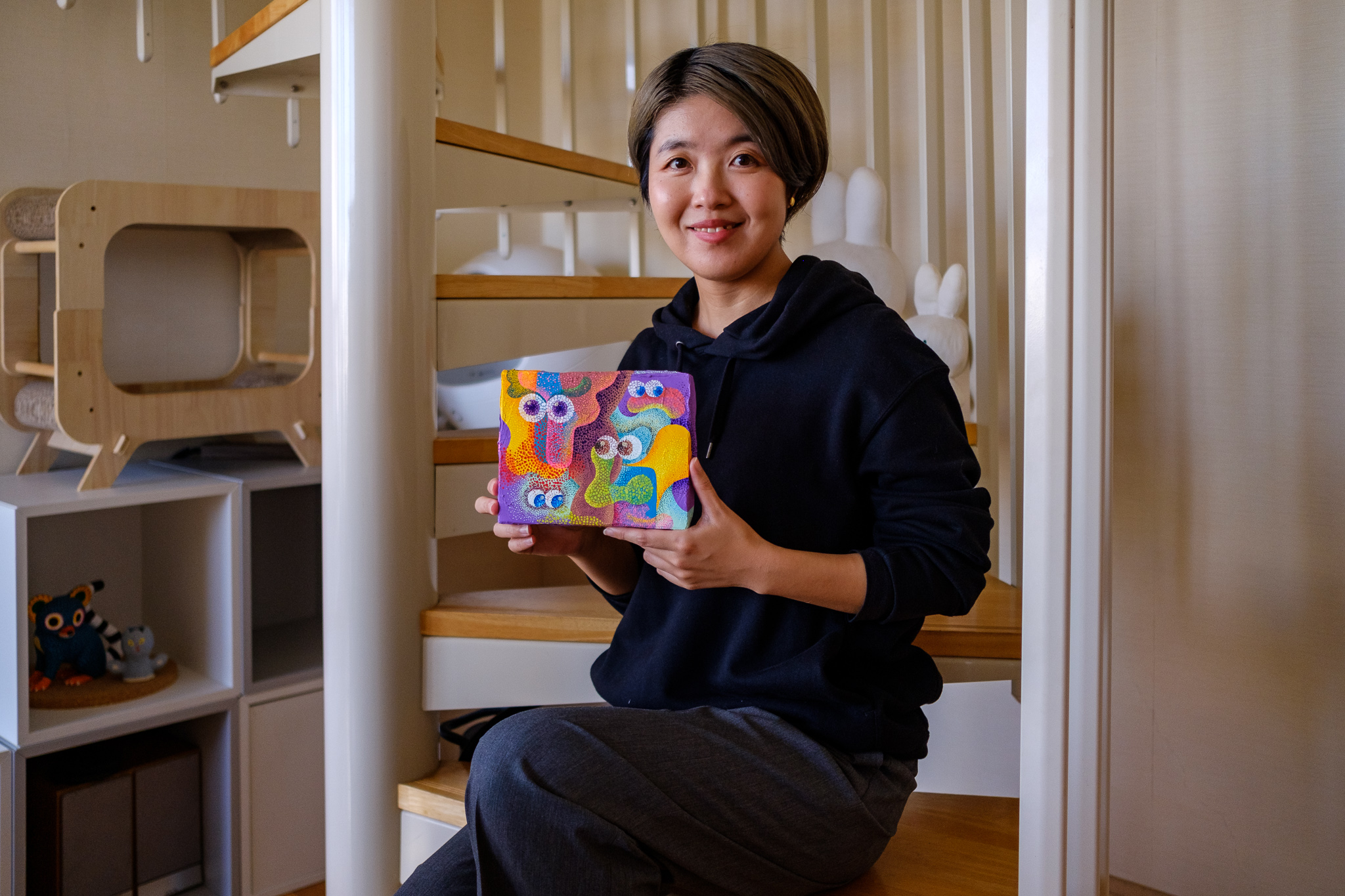
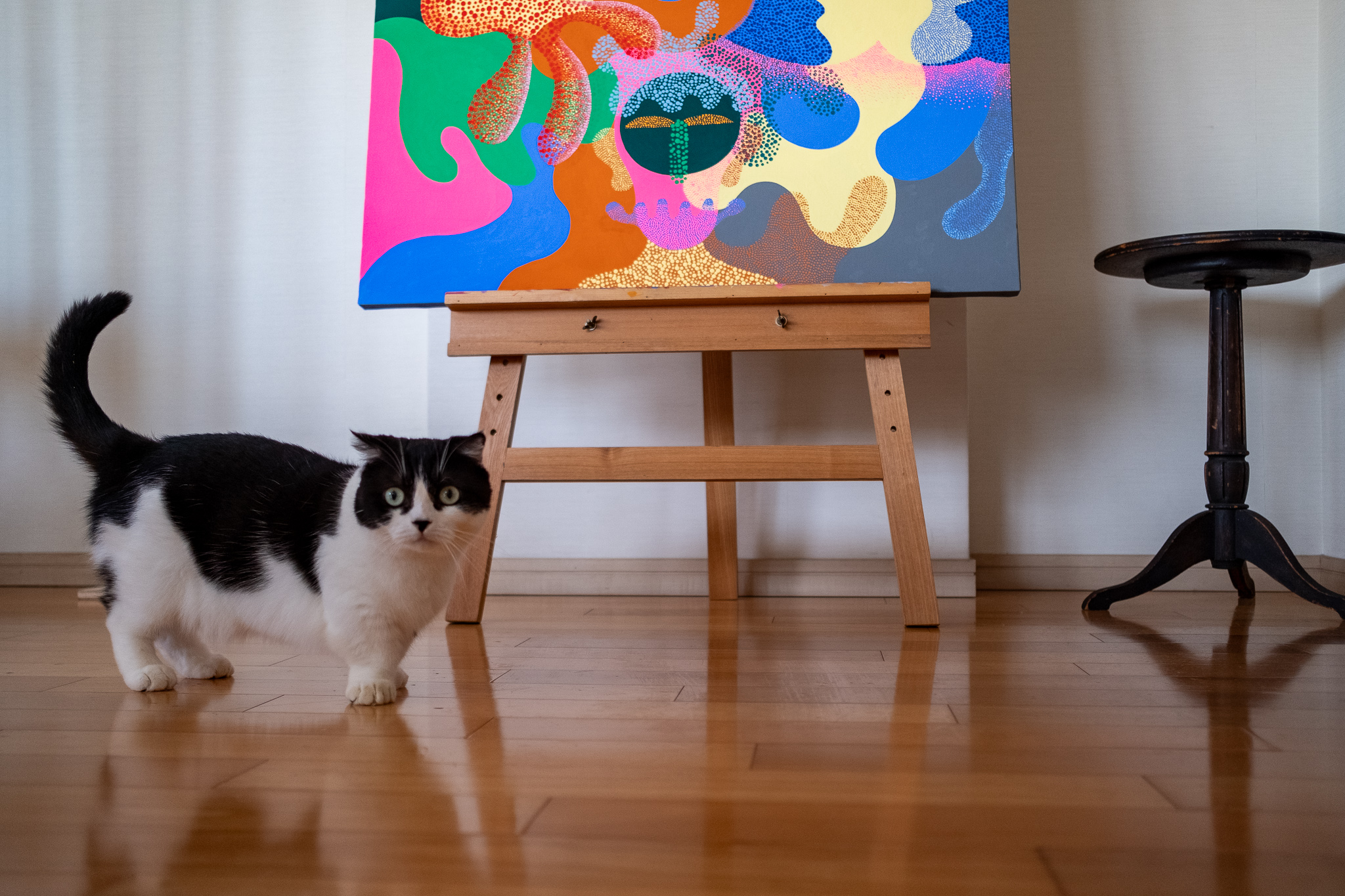
Q: What inspires your paintings? Is there a central theme?
Harmony is very important in my paintings. It’s important that the colours I use, no matter how vibrant or vivid, are cohesive to the rest of the painting. All the colours I select for a painting must be able to support each other in the best possible combination.
I guess I am trying to express the oneness of all things. Every choice in my art is a conscious choice to make sure whatever I do supports the whole. I never want any element to stand out or be the centre of the painting. Although the size and colour of each dot is different, there is no hierarchy - everything is the same. In some sense, it feels like a microcosm of society, where we each look different but are still fundamentally human.


Q: What is your art process? How long do you take with each painting?
To be honest, these days I do very little preparation for each new piece. When I first started I I did more planning, but I found my sketches too perfect and very limiting. Now I paint the base colours first and then slowly build the piece up by adding the dots. It’s often harder to decide what colours to add to a piece as I get deeper into the painting.
Depending on the size, a painting can take me from two weeks to about two months to complete.
For my art I can’t paint without sunlight because the colours look different under electricity or when it’s dark and rainy. It takes longer during the rainy season or winter when the sun sets earlier.
I also need time to step away from my painting and “let it rest” before I know how to continue. I rarely have a final image in mind, so it’s hard to know when it will end. I usually hear it speak to me to tell me it’s done, and that’s when I stop.
For my art I can’t paint without sunlight because the colours look different under electricity or when it’s dark and rainy. It takes longer during the rainy season or winter when the sun sets earlier.
I also need time to step away from my painting and “let it rest” before I know how to continue. I rarely have a final image in mind, so it’s hard to know when it will end. I usually hear it speak to me to tell me it’s done, and that’s when I stop.
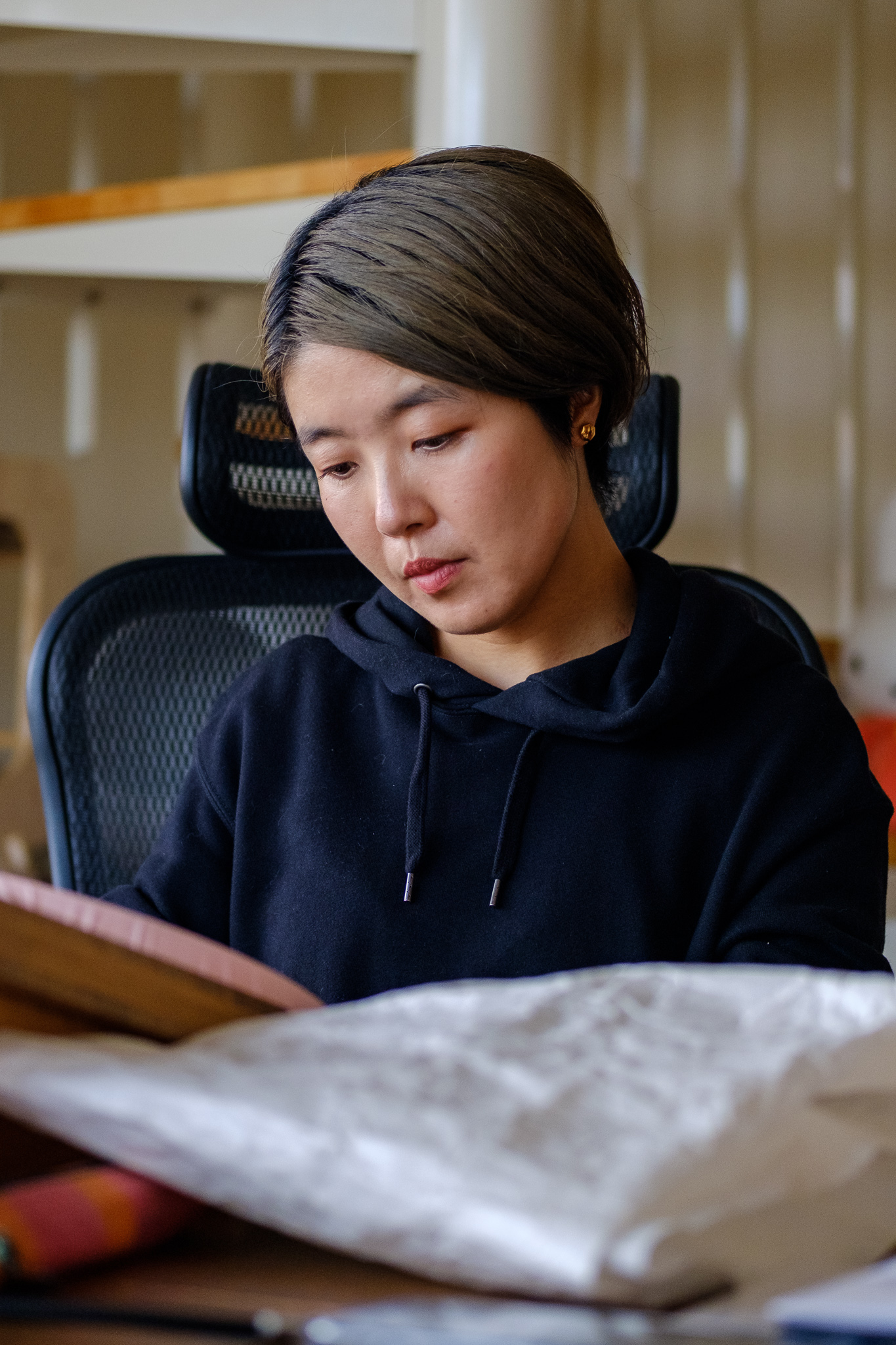
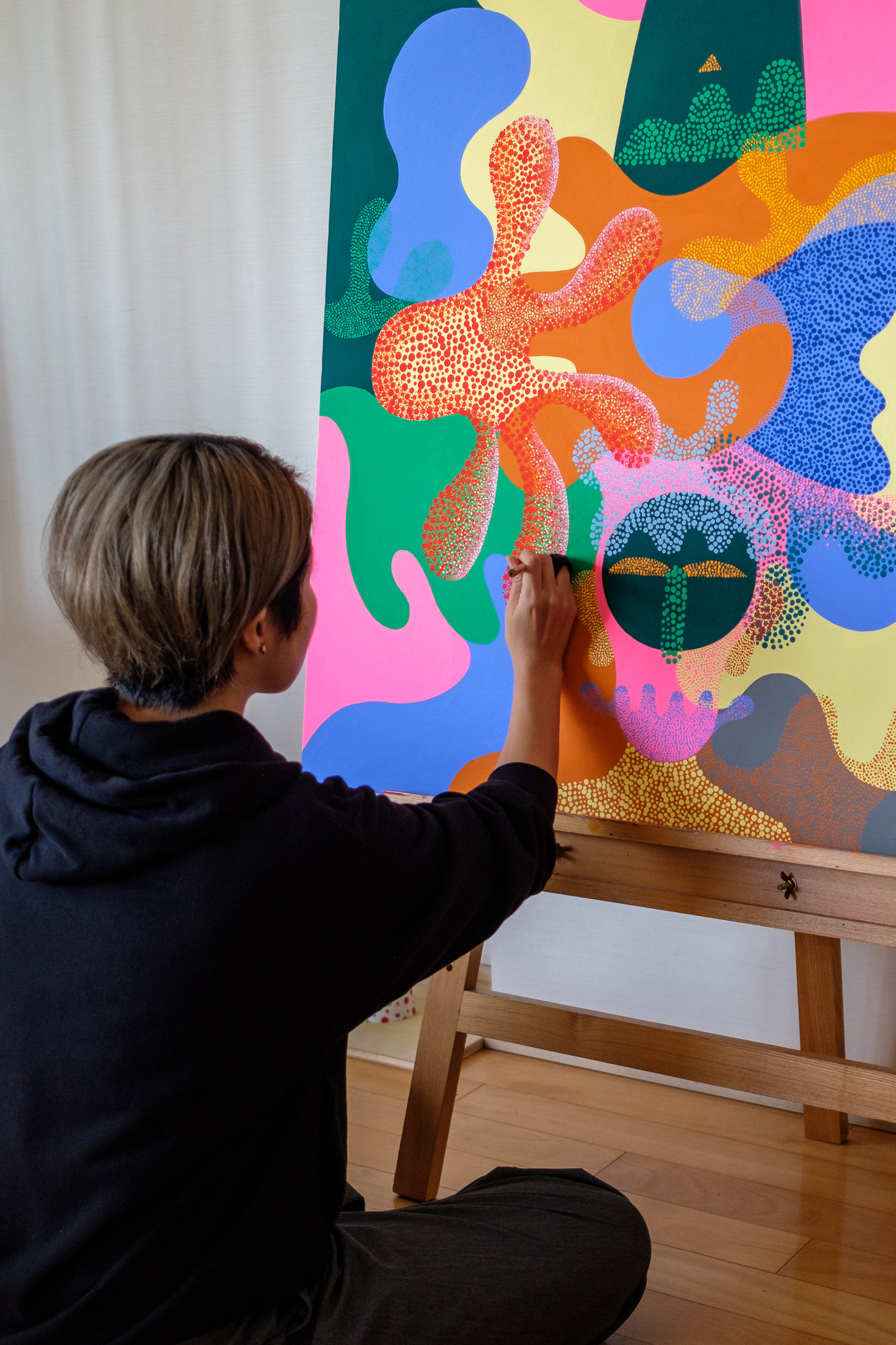
Q: What are you currently working on? And how has life been as an artist in Japan?
I’m working on two projects now: a group show in December which is about small art for restrooms, and a solo show in January. It isn’t easy to have a solo show, because the art market is slow and many galleries are suffering. To be honest, during Covid, there was a boom, but it’s completely settled down now. New galleries and young artists are suffering.
It’s important to maintain your connections to curators and collectors. I am thankful for customers who keep buying my work, they definitely help sustain my art practice.
I also teach art classes part time, but they’re not in my dot painting style. I enjoy painting with others, but with my dot painting I need to focus. It’s hard to talk and paint at the same time, maybe because I am constantly talking to myself in my head. I can talk about what I’m painting, but I find small talk almost impossible. Same with music, instrumental pieces are fine, but not anything with lyrics.
I also teach art classes part time, but they’re not in my dot painting style. I enjoy painting with others, but with my dot painting I need to focus. It’s hard to talk and paint at the same time, maybe because I am constantly talking to myself in my head. I can talk about what I’m painting, but I find small talk almost impossible. Same with music, instrumental pieces are fine, but not anything with lyrics.
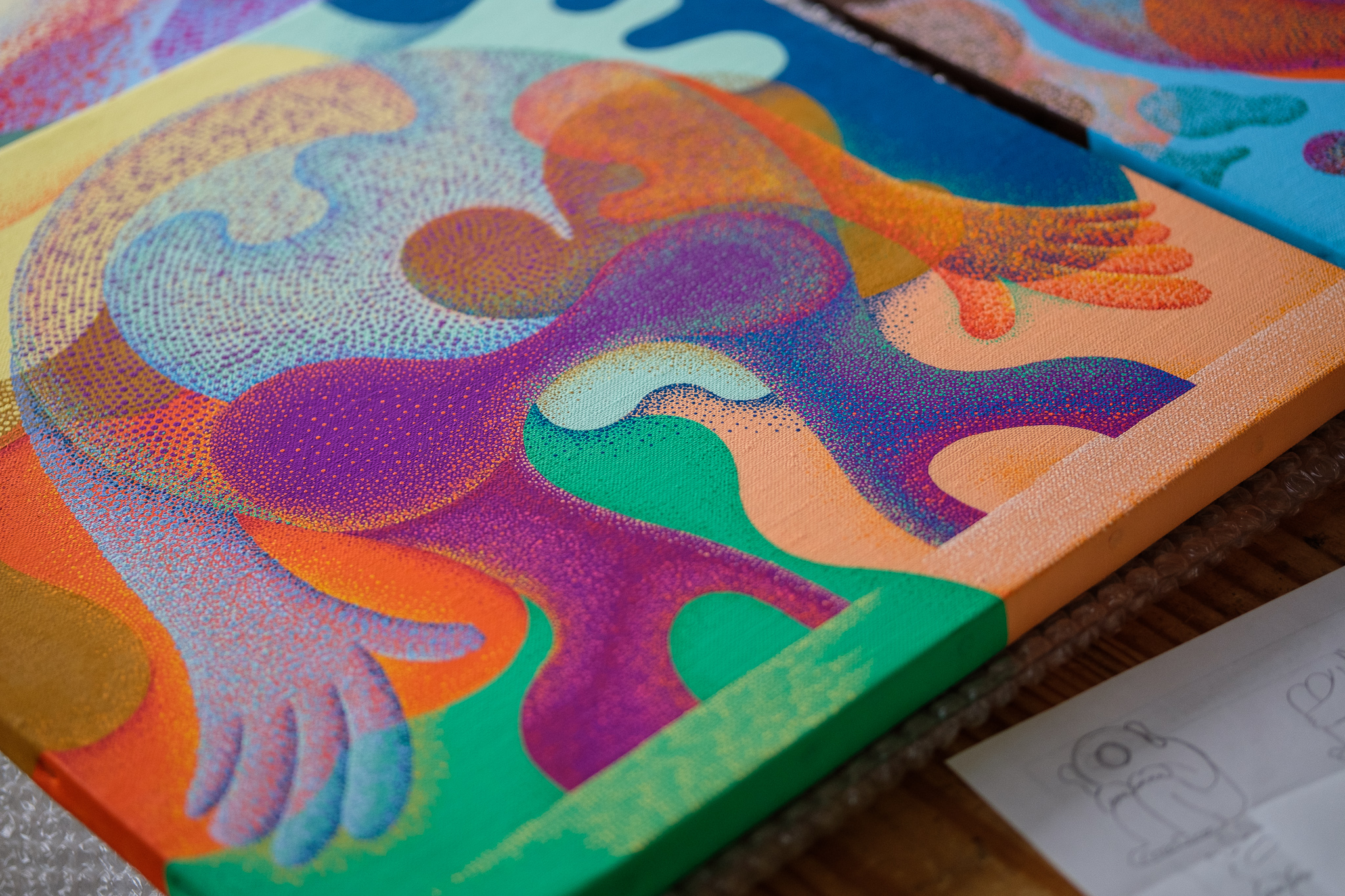

Q: How different are solo shows vs. group shows? And what about fans vs. collectors?
Group shows are definitely easier. I can submit 2-3 pieces, perhaps even past artworks. But for a solo show, the responsibility is greater. I contribute all of the pieces and I also need to be able to draw a big enough crowd of collectors, guests and friends.
I need to be able to bring in these people and “entertain” them. I’ve done workshops or live painting. Two years ago, I did a live painting session and it was so stressful. Everyone was so quiet and gazing at my every move.
I need to be able to bring in these people and “entertain” them. I’ve done workshops or live painting. Two years ago, I did a live painting session and it was so stressful. Everyone was so quiet and gazing at my every move.
That said, I’d love to do a group show overseas one day. I think that would be cool.
As for fans and collectors, I think fans come and go based on style. My style is changing to become more abstract. Japanese art seems to be trending towards more anime and street art styles, which I don’t really care much for.
As for fans and collectors, I think fans come and go based on style. My style is changing to become more abstract. Japanese art seems to be trending towards more anime and street art styles, which I don’t really care much for.
“I do my art for me
and not other people.”
and not other people.”
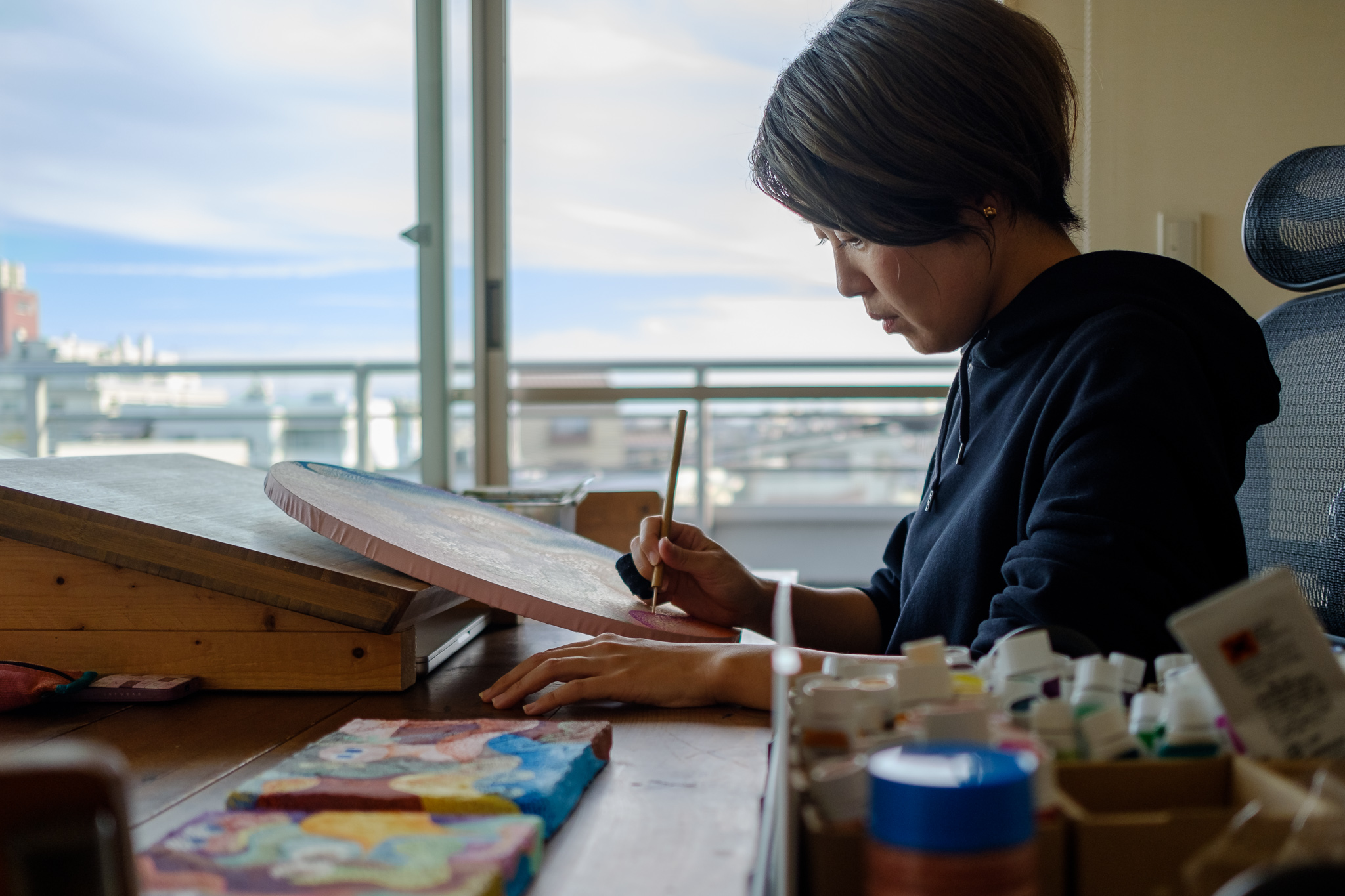
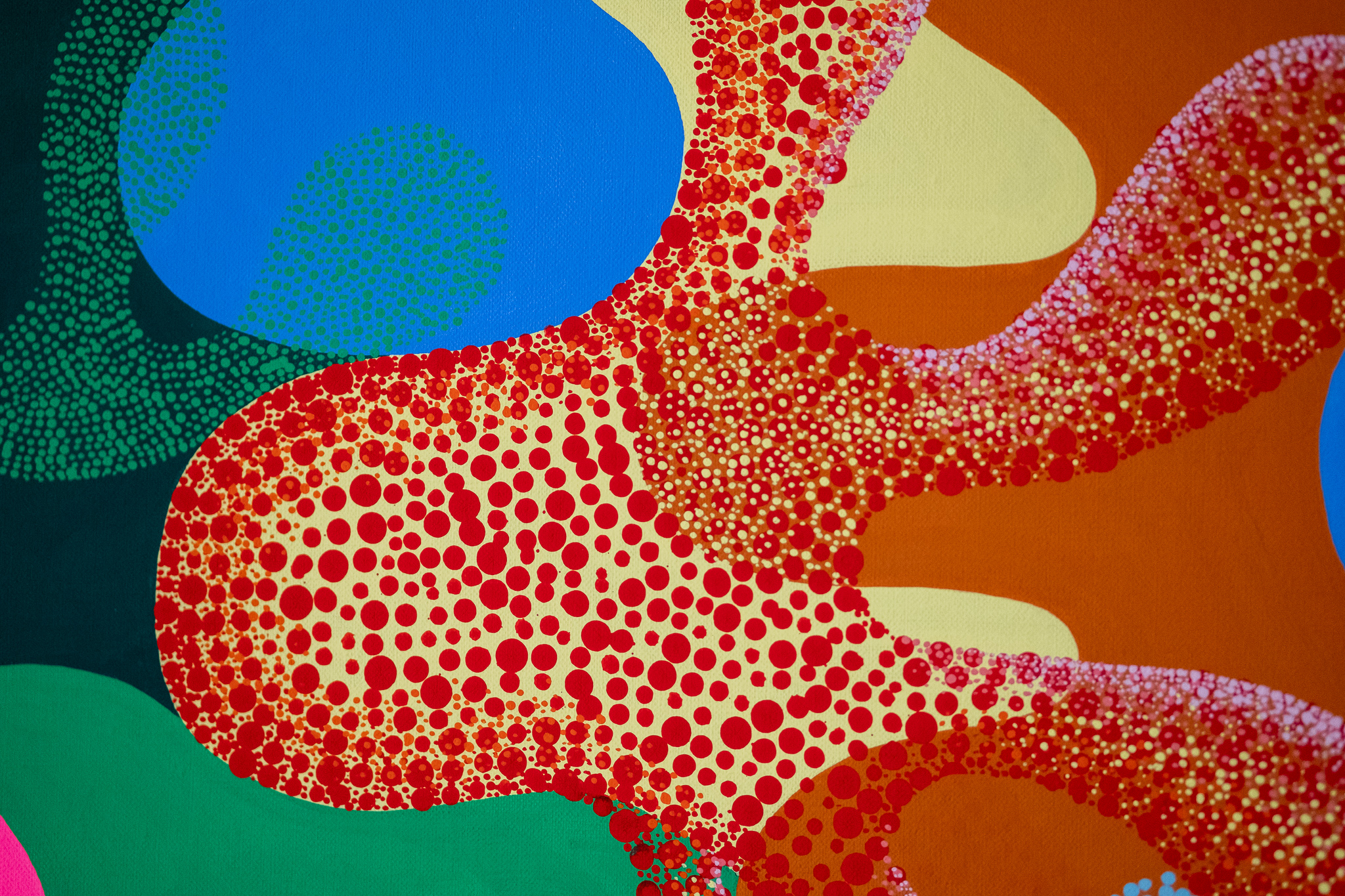
This was a quick visit, but I really enjoyed chatting with Momo and watching her paint. Momo’s calm presence and her zen-like approach to her dot painting left quite an impression. Looking at her paintings remind me that despite all our individual differences, there’s always a choice for us to prioritise unity and work towards the best for all.
Follow:
Momo
https://momomo.mystrikingly.com
https://www.instagram.com/momomi_chida
︎
Visited October 2024, published March 2025.
Momo
https://momomo.mystrikingly.com
https://www.instagram.com/momomi_chida
︎
Visited October 2024, published March 2025.